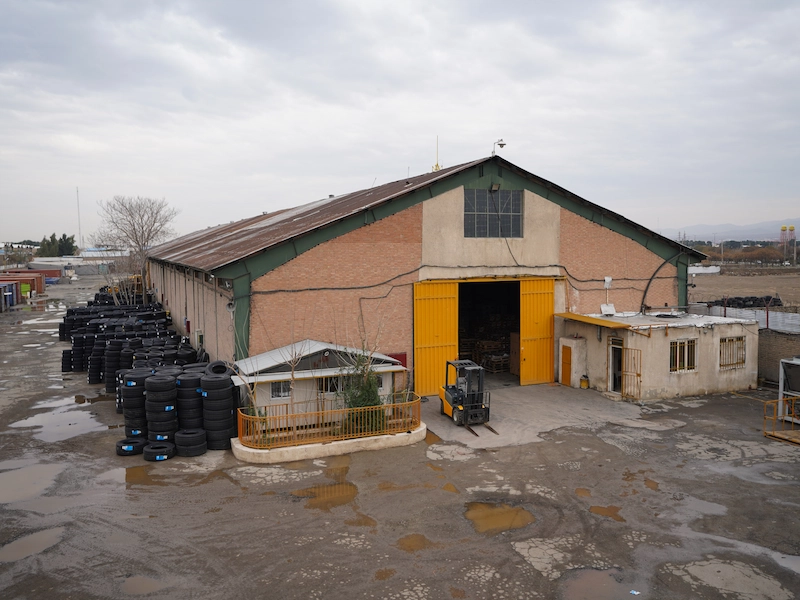Customs duties are the amount that must be paid as a tax when a shipment is cleared from customs. In the international transportation of goods, when a shipment wants to cross the border of a country, it first enters the customs, and after going through the legal procedures, an amount is collected from the owner of the goods or the trading company in question to allow the shipment to be cleared. This amount, which can vary depending on the type of goods, country of origin and other factors, is the same as customs duties.
Determining customs duties for goods serves different purposes. First, these duties, like other types of taxes, are a source of income for the government. On the other hand, governments try to support domestic products by determining these duties for imported goods. These duties can also help balance the balance of payments. Another goal pursued through duties and customs taxes is to direct consumer demand. In this way, governments try to divert consumer demand from one product to another. Customs duties can be a controlling tool to reduce imports of goods that are harmful to the environment, economy or public health.
Taisheh Logistics, with 65 years of experience in the field of logistics services, transportation and warehouse rental in Tehran, the ability and expertise required to provide public and private warehouse rental services, storage of documents and documents, transit warehouse, household goods warehouse rental, delivery to customers for Internet sales, value-added services, warehouse rental, shed rental, etc. are in a highly protected space with guards and CCTV cameras. Goods that are cleared from customs can enter the warehouses directly and enter one of the types of warehouses according to the type of product.
What is the customs tariff code?
Customs tariff code or HS code is an eight or ten digit code that is different for each specific product. In fact, each HS code belongs to only one unique product and the amount of customs duties of that product is determined according to this code.
The customs tariff code is actually an international standard system that is used in more than two hundred countries of the world. The HS code not only determines the customs tariff of any particular product, but also the class and type of that product and many details and specifications. The first four or six digits of this code are common to all WCO (World Customs Organization) member countries for each product. But the next two or four digits can be different according to the classification pattern of each country.
The first two digits of the customs tariff code belong to the goods chapter and the next two digits belong to the goods category. The third two digits also indicate the product subcategory. For example, if the first six digits of the HS code of a product are 1006.30, the first two digits, ie 10, refer to the tenth chapter of the standard classification of goods, i.e. cereals. The next two digits, ie 06, are related to the head of category 06, ie rice. The next two digits, 30, also refer to the 30th subcategory of rice, i.e. polished rice. Therefore, all goods whose HS code starts with 1006 are considered as rice. This classification system has a total of twenty one chapters, and each chapter has several categories and subcategories.
How to calculate customs fees
The customs duty rate of each product is determined according to the HS code of that product. Customs fees include several different categories, the most important of which are warehousing fees, customs duties, and commercial profit. The storage cost is obtained from the product of three factors: the gross weight of the goods, the storage rate and the duration of keeping the goods in the warehouse. Customs duty is a fixed part of customs fees, which is equal to four percent for each product. Commercial profit is also a variable part of customs fees that is determined by the government and according to macroeconomic policies. The formula for calculating business profit is as follows:
Trading profit = value of safe x exchange rate x tariff rate
CIF value should also be calculated separately according to the following formula:
Safe value = exchange rate announced by customs x (transportation cost + insurance cost + other additional costs)
What is known as customs duty is actually the sum of commercial profit and customs duties.
Customs exemptions
Governments usually exempt some goods from paying customs duties. These exemptions follow specific goals and are often set to support the country’s economy. For example, production line machines that can increase production in the country and create employment are subject to these exemptions. Goods that enter the country in a limited way and for reverse engineering, as well as industrial raw materials, laboratory equipment and quality control devices are also included in this category. Defense items and relief supplies are also among these tax exemptions.
In addition, governments can consider special exemptions for some goods at certain times. These exemptions are usually made with the intention of regulating the market or compensating for the lack of some basic goods and special medicines.







